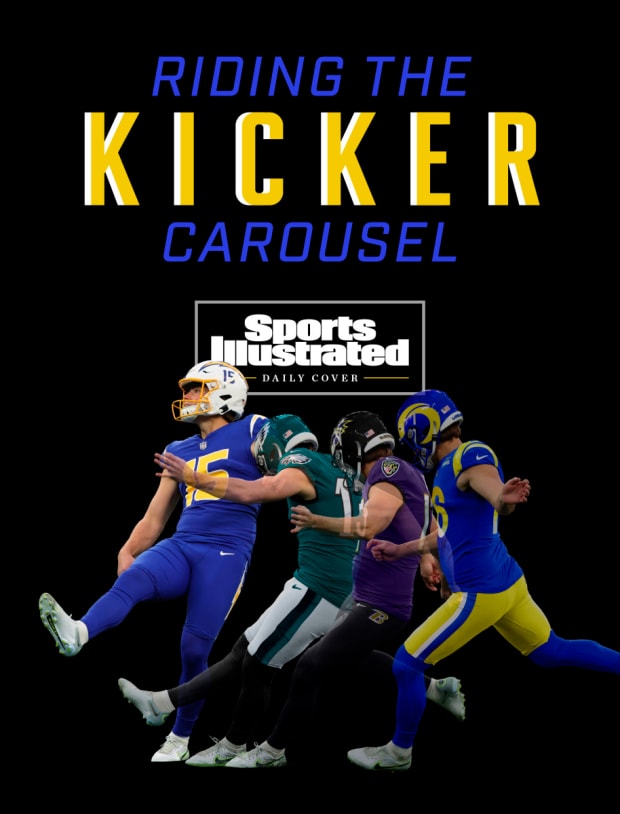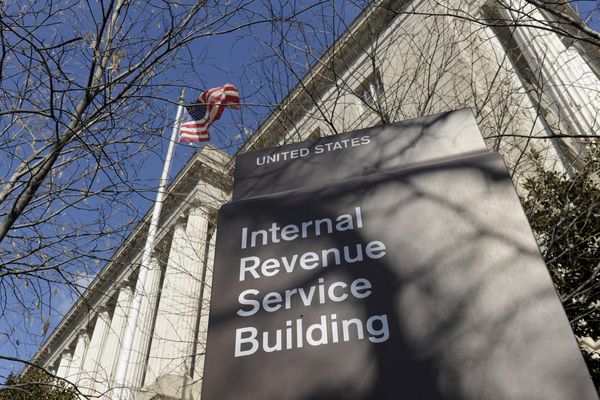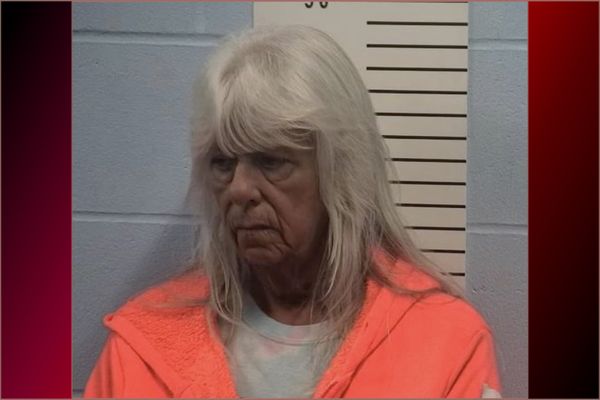Good morning, I’m Dan Gartland. Carlos Correa is going back to the Twins, just like we all expected.
In today’s SI:AM:
🦵 The nomadic lives of fringe NFL kickers
🏀 The NBA season is at its midpoint
If you're reading this on SI.com, you can sign up to get this free newsletter in your inbox each weekday at SI.com/newsletters.
It’s not over until he puts pen to paper
Free agent Carlos Correa has agreed to terms on a contract (again).
He reportedly has a six-year deal with the Twins (whom he played for last season) worth $200 million. With four years of vesting options based on Correa’s making a certain number of plate appearances, it could become a 10-year deal worth $270 million. (Even if those options do not vest, the Twins could exercise team options to keep him.)
Correa initially had a deal with the Giants to sign one of the biggest contracts in baseball history (13 years, $350 million), but San Francisco backed out before Correa formally signed due to an unspecified medical concern that arose during Correa’s physical. That opened the door for the Mets to swoop in and reach an agreement on a contract nearly as rich (12 years, $315 million). That was three weeks ago. Correa’s physical with the Mets revealed the same concerns the Giants have and his deal with New York was also put on hold.
We know now that the issue is Correa’s surgically repaired right ankle. Correa broke his fibula and damaged some ligaments while sliding into third base in a minor league game in 2014, his third season as a pro. To repair the injury, surgeons installed a metal plate in Correa’s lower leg. After he was slow getting up following a slide in a game last season, Correa told reporters that he had been hit on the plate and felt a “numb,” “vibrating” sensation. But he has not missed any games at the major league level due to the ankle.
As of this morning, Correa has reportedly passed his physical with the Twins, according to Jon Heyman of the New York Post. Heyman reported earlier that Minnesota already signed off on the ankle that the Giants and Mets balked at anyway. (Correa would have gone through a physical when he signed his one-year contract with the Twins before last season, so the team should be familiar with his medicals already.)
Mets owner Steve Cohen has more money than most people would know what to do with, but he apparently wasn’t willing to risk spending a couple hundred million dollars on a player with long-term health concerns. According to Heyman, the Mets’ final offer to Correa was for six years and $157.5 million, with another nonguaranteed $157.5 million over six years that he could have earned based on playing time targets.
Assuming it goes through, Correa’s agreement with the Twins marks the conclusion of the strangest free-agent saga I’ve seen in more than eight years covering sports—and my 25 years as a baseball fan. It’s been nearly a month since he reportedly agreed to terms with the Giants on Dec. 14. The news of his agreement with the Mets, which broke at nearly 3 a.m. New York time, was shocking enough. The three weeks of uncertainty that followed was bizarre and, for Mets fans, agonizing. Imagine how Correa must feel, too, having to settle for $150 million less in guaranteed money compared to his deal with the Giants.
Signing Correa would have made the Mets prohibitive favorites in the National League in 2023, but they’ll still be among the best teams in baseball without him. They still project to have the highest payroll in the league by a wide margin over the Yankees, although Cohen’s luxury tax bill will be smaller. Last year’s third baseman Eduardo Escobar is still under contract for at least one more season, or the Mets could give more playing time to top prospect Brett Baty at his preferred position instead of moving him to the outfield. It’s not the same as signing Correa, but they’ll be just fine.
The best of Sports Illustrated

Photo Illustration by Bryce Wood; Kiyoshi Mio/USA TODAY Sports (4)
- In today’s Daily Cover, Alex Prewitt looks at the nomadic life of kickers on the NFL’s fringes:
Stars like the Ravens’ Justin Tucker and the Packers’ Mason Crosby, who enjoy sustained success and job security in a single city, are outliers, populating the stratosphere of the kicking world. But a large portion of the NFL’s kicking fraternity belongs to a stratum of lesser-known footsloggers for whom the line between opportunity and unemployment is goalpost-thin: Over the past three NFL seasons, of the 63 kickers (excluding emergency fill-ins who play other positions) who have attempted at least one extra point or field goal during that time, nearly 40% of them (25), have done so for multiple teams.
- In this week’s edition of The Playmaker newsletter, Chris Herring evaluates the biggest stories at the NBA season’s midway point.
- Our writers can’t agree on who should be No. 1 in our NFL power rankings.
- Conor Orr writes that the mess the Cardinals find themselves in is all the fault of owner Michael Bidwill.
- Madeline Coleman has a preview of the NWSL draft.
- The Broncos reportedly interviewed Michigan coach Jim Harbaugh.
- Stephanie McMahon has resigned as co-CEO of WWE, days after her father’s return to the company.
The top five...
… things I saw last night:
5. Andrew Copp’s backhand assist against the Jets.
4. The reception Donovan Mitchell got in his return to Utah.
3. The Kentucky fan who got kicked out of Rupp Arena for his sign telling John Calipari to take the Texas job. (Kentucky lost to South Carolina, 71–68.)
2. The final two minutes of the Heat-Thunder game. (Miami pulled out a 112–111 win.)
1. J.J. Watt’s emotional reaction to a tribute video on his retirement.
SIQ
On this day in 2004, the Eagles converted on a long, long fourth down with just over a minute to play in regulation against the Packers to stay alive en route to an overtime victory in the NFC divisional playoffs. What was the down and distance on Donovan McNabb’s pass to Freddie Mitchell?
- Fourth-and-18
- Fourth-and-22
- Fourth-and-26
- Fourth-and-31
Yesterday’s SIQ: Which of the following was not a finalist for the name of Charlotte’s new basketball team?
- Bobcats
- Dragons
- Flight
- Knights
Answer: Knights. (That’s the name of the city’s Triple A baseball team.)
The Bobcats came to be when founding Hornets owner George Shinn moved his franchise to New Orleans after the 2001–02 season. The central reason for the move was—what else?—a dispute between the owner and the city over building a new arena. Shinn wanted a new downtown arena with more luxury suites, similar to the ones that other NBA teams were opening around the same time. The team’s home then was the cavernous 24,000-seat Charlotte Coliseum, located on the outskirts of the city near the airport. It was only 14 years old, but the Hornets didn’t even fill it to half capacity in their final year in Charlotte, finishing dead last in the NBA in attendance with an average of 11,286 fans per game.
Shinn shouldered the blame for the lack of fan support. Jack McCallum wrote just before the team skipped town that the owner “was a Bible-thumping panjandrum
until his 1999 trial for sexual assault of a Hornets employee became a main event on Court TV,” and even though he was acquitted “the public-relations damage was irreparable.” Even before that, Shinn had a reputation for being cheap with free-agent signings. In March ’99, months before the sexual assault trial, Jackie MacMullan wrote that he should sell the team.
The Bobcats filled the void left by Shinn taking the Hornets elsewhere, although the toxic owner’s departure didn’t renew interest in pro basketball in North Carolina. While the city of Charlotte did build a new arena for the team in the center of town, that didn’t fix the attendance woes. The routinely dismal Bobcats never finished higher than 21st in the league in attendance.







